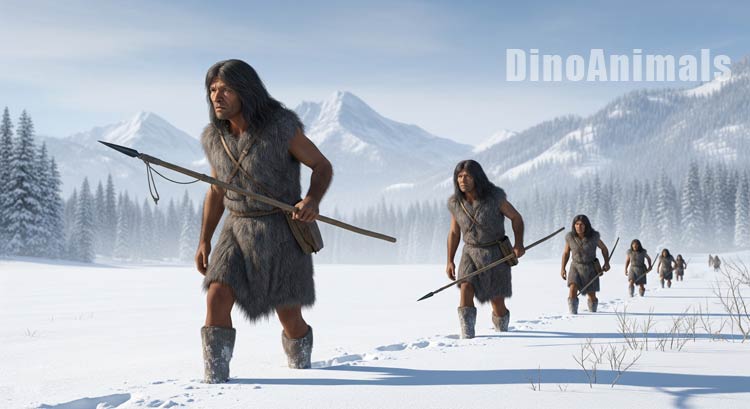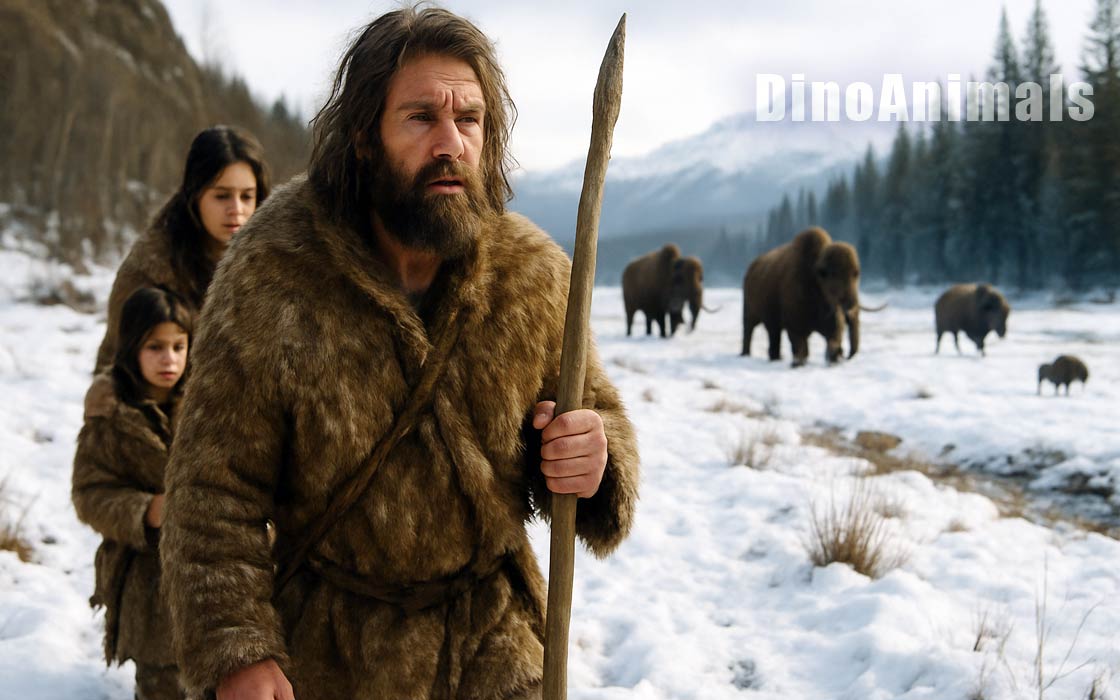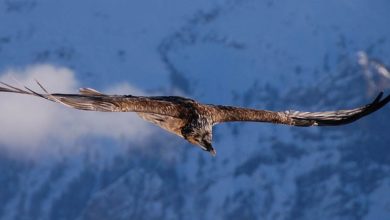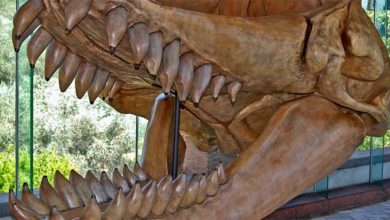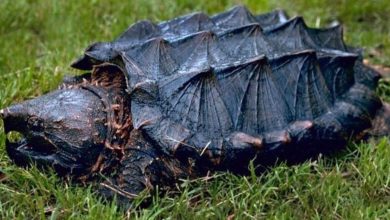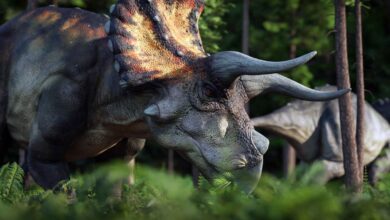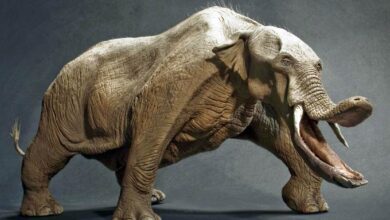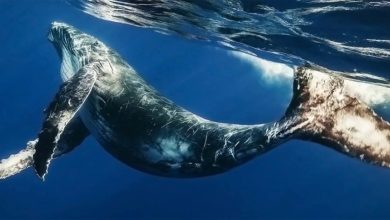Hiking with Cave Dwellers
Imagine you are standing at the entrance of a cave. The air is cool and damp, smelling of smoke, musty moss, and animal fat. Somewhere in the depths, a warm glow of fire flickers. You hear the crackle of burning branches, the low murmur of conversation in a language you would not understand, though these are the voices of your relatives from tens of thousands of years ago. In the background, a muffled bark of a wolf-dog can be heard, and then silence again, as if the world is holding its breath.
Behind you stretches the nocturnal landscape of the Late Pleistocene: the silver moonlight reflects in frozen puddles, and in the distance, a wolf howls over the dark line of pine trees. The frost nips at your cheeks, and your hands instinctively seek the warmth of your fur gloves. This is a world where Homo sapiens and Neanderthals (Homo neanderthalensis) share a continent, and every day is a test of strength against cold, hunger, and predators. The winters are often long and merciless, the summers short and fickle – the climate is changing, and with it, nature and the fate of humanity.
Soon we will venture deeper into this world – we will sit by the fire, listen to stories spun by our ancestors, and set out with them on a hunt. We will walk on paths that the earth now conceals and look into the eyes of the same animals we know from the drawings on cave walls. This is a journey without a time machine, but with guides who knew every stone, every scent, and every sound of this epoch.
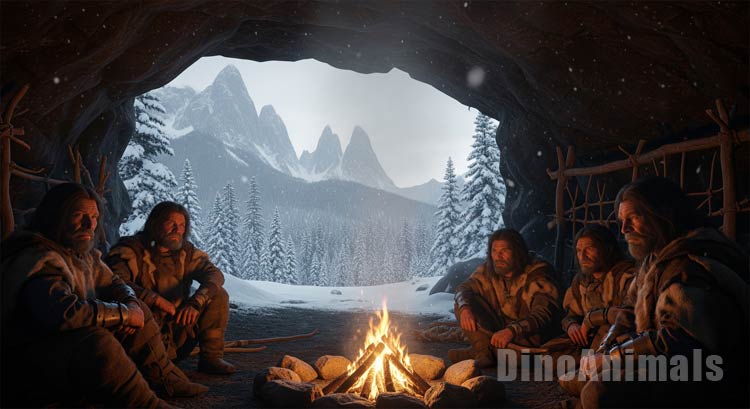
At the Fire
The fire dances in the cave’s dim light, casting shadows that bring the painted walls to life. Here, in the heart of the camp, is where the pulse of life beats. A woman with strong arms and a wind-weathered face turns pieces of meat over the embers. The fat sizzles, and the aroma of roasted game mixes with the smell of smoke. Nearby, an older man sharpens a stone blade – his hands move with confidence, as if they have known this motion forever. Children sit close, feeling the warmth radiating from the hearth, absorbing every gesture, every word.
For the cave dweller, fire was more than a source of warmth. It was light that drove away the darkness, protection from predators, and a Stone Age laboratory. In caves such as Gruta da Aroeira in Portugal, archaeologists have found traces of hearths from approximately 400,000 years ago – proof that the taming of flames was known hundreds of thousands of years before the appearance of Homo sapiens. Ashes, charred bones, and stones cracked by the heat today tell more than many a textbook.
Common moments by the fire are a time for passing on knowledge. The young learn to recognize the tracks of the woolly rhinoceros (Coelodonta antiquitatis), to knap flint spearheads, to select edible plants and avoid poisonous ones. In this school, there are no blackboards or papyrus scrolls – only memory and repetition, from generation to generation. Every sentence, every story becomes a thread in the web of knowledge that the tribe has been weaving for hundreds of generations.
And beyond the cave’s threshold – darkness and the unknown. The wind carries the scent of snow and something else… perhaps a wolf, perhaps a foreign fire in the distance. The fire holds us here a moment longer, but tomorrow we will set out on our journey – to where the tundra meets the ice, and every track in the snow is a promise of adventure or a threat.

A Digression on the Architecture of the Place
A cave is not merely a shelter from the wind and snow. It is the heart of the tribe – a space where daily life intertwines with the inexplicable. We venture deeper, guided by the flickering light of a torch. The flame casts orange reflections on the walls, which undulate in the twilight as if alive. The air grows cooler, moisture settles on the skin, and from the depths comes the quiet dripping of water – the regular, hypnotic rhythm of this stone cathedral.
The walls are rough, cold to the touch, and in their recesses, images are hidden – silhouettes of horses (Equus ferus), woolly mammoths (Mammuthus primigenius), and steppe bison (Bison priscus), painted with ochre and charcoal. Sometimes the paint looks so fresh that it seems to shine, though we know it is tens of thousands of years old. Here, each drawing is a fragment of a story whose meaning often eludes the modern mind.
In places like the Chauvet Cave in France, dated to approximately 36,000 years ago, the paintings captivate with their realism and sense of movement – the manes of horses seem to undulate, and the silhouettes of lions creep towards their prey. They were placed in hard-to-reach locations, as if they were intended only for the initiated. Archaeologists speculate that cave art may have been associated with hunting rituals or beliefs whose meaning today is only a shadow of its former significance.
But not all the “architectures” of this world were created by nature. In Bruniquel, France, Neanderthals built circles from broken stalagmites deep within a cave around 176,000 years ago. To this day, no one knows if it was a ritual site, a meeting place, or perhaps a tomb. It is known, however, that it required planning, cooperation, and courage – because to get that far, one had to operate in absolute darkness, relying only on the crackle of fire and the smell of smoke.
Every corner of the cave is a record of history. Here are soot marks on the ceiling – the remains of a torch that went out thousands of years ago. There is a handprint, small, likely belonging to a child. In another place, bones – sometimes brought by humans, other times by hyaenas. Modern humans keep history in books and on hard drives, but for them, the parchment was stone, and the pen was flame.

A Walk Through the Wildlands
The dawn is cold and bright. The air pierces your nostrils like an icy needle, and every breath turns into a small cloud of vapor. We leave the cave in the company of a hunter – his leather “coat,” reinforced with reindeer fur, crackles with every movement. His feet, wrapped in soft hides, bend the dry, creaking grass, and in his hands he holds a spear tipped with a flint blade that gleams in the first rays of the sun.
His eyes constantly scan the horizon: here he notices a flattened clump of plants, there a scraped patch of bark on a pine trunk, left by a moose (Alces alces) searching for food. This world has no signposts or maps – everything is written in the tracks, scents, and shape of the landscape.
The landscape is harsh but full of life. To the east, over a frozen river, a herd of reindeer (Rangifer tarandus) hurries by, their steaming nostrils and wide hooves allowing them to glide effortlessly over the snow. Above them, in the white sky, ravens (Corvus corax) appear, never missing an opportunity to follow a predator or a human in the hope of feast leftovers.
Suddenly, the hunter bends down, examining a fresh paw print. It is larger than an adult human’s hand, and the edges of the track are sharp – it was made no more than an hour ago. It belongs to a cave lion (Panthera spelaea), the king of this world, bigger and more powerful than today’s African lions, without a mane, with a massive chest and paws capable of felling a horse with a single blow.
We walk in silence, interrupted only by the creaking of snow and the rustle of common juniper (Juniperus communis). The wind carries the scent of resin and a distant, almost imperceptible aroma of smoke – perhaps from another camp, or from a steppe fire many kilometers (miles) away. In this world, man is just one element of the chain, strong, but far from omnipotent.
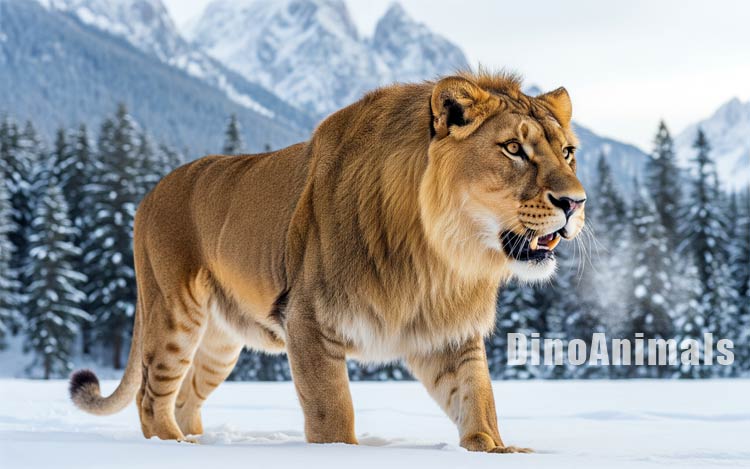
Fauna on the Cusp of Change
The sun rises higher, and the snow begins to sparkle like millions of crystals. The hunter suddenly raises his hand – a sign to stop. On the edge of a frozen valley stands a lone woolly rhinoceros (Coelodonta antiquitatis). Its thick, reddish coat ripples in the wind, and its massive horn cuts through the air like a curved sword. The animal grazes peacefully, scraping the snow with its horn to reveal tufts of grass and lichen.
“There used to be more of them“, the hunter’s gaze seems to say. In his memory are still the times when valleys were full of woolly mammoths (Mammuthus primigenius), and the spring migrations of reindeer stretched in an unbroken chain for days on end. Now it’s different. Winters can be harsher or suddenly give way to warm winds, and some migration routes are becoming empty.
On the other bank of the river, we spot movement – a herd of aurochs (Bos primigenius), the dark, powerful ancestors of cattle. The bull leads the way, his horns glistening in the sun, ready to gore any predator. The animals disappear among the birches, watchful, reacting to every sound. Above, a pair of golden eagles (Aquila chrysaetos) circles, observing the valley with the kind of patience only an aerial predator can possess.
But not all creatures are prey. In the shadow of a rocky cliff sits a cave lion. Motionless, with eyes the color of molten amber, it watches our every move. This predator knows no mercy – it hunts both animals and humans. In its gaze, there is no fear, only calculation.
The hunter knows that the world is on the edge. The changing climate and the growing number of humans are slowly shifting the balance in which animals have lived for millennia. There is still time to walk the same path as the mammoths, but the tracks in the snow say that this time is running out.
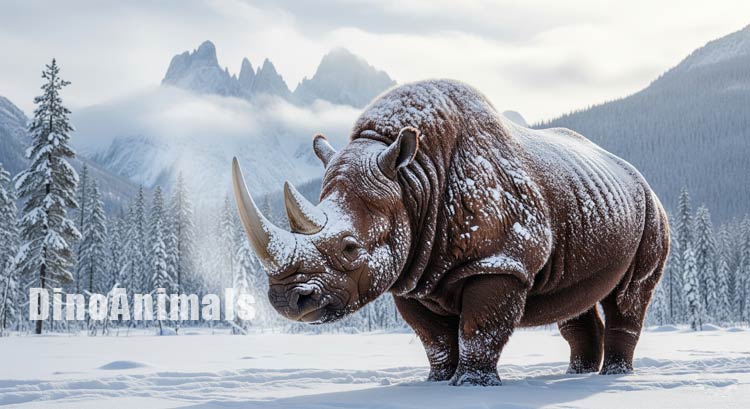
A Walk Through Time
The snow crunches under our feet in a rhythm of a steady march. The hunter walks ahead, his broad shoulders silhouetted against the pale blue sky. The wind carries tiny ice crystals that swirl in the sun like golden dust. At one point, he stops, bends down, and sweeps his hand across the frozen ground. Beneath a thin layer of snow, a brownish gleam appears – a fragment of a bone protruding from the earth.
He lifts it carefully, as if it were a talisman rather than the remnant of a dead animal. “Long ago, before I was born, this valley was inhabited by mammoths,” he says, his voice mingling with the howling wind. At that moment, the landscape around us begins to change. The path underfoot wavers, and time slows down. The sparse pine trees give way to a vast, greenish-brown tundra, where herds of woolly mammoths (Mammuthus primigenius) slowly move. Their long tusks gleam in the sun, and their dense fur ripples in the wind. A low rumble can be heard, carrying across the valley. The scent of grass and dry earth fills the air – a sign that summer in the north is in full swing.
The hunter leads us through successive seasons. Here is spring, when the ice on the rivers cracks with a roar, and the melting ice releases air that has been trapped for months. The riverbanks become a muddy paradise for aurochs and reindeer, who seek fresh vegetation. Here is autumn, when the herds gather in the valleys, and predators – cave lions (Panthera spelaea), cave hyaenas (Crocuta crocuta spelaea), and wolves (Canis lupus) – follow their trail, sensing the coming of winter.
Sometimes the images overlap: deep in the cave, a Neanderthal sits hunched over a hearth, and behind him, like a shadow, stands a Homo sapiens from another era. In the same place, at different times, other people look into the same fire. Their faces differ in details, but their eyes hold the same gaze – watchful, cautious, hungry for stories.
“Man has always been on the move” says the hunter. “We changed our tools, we changed our ways of hunting, but we always walked. And we always listened to the earth.”
When we return to the present, the bone in his hand feels heavier – as if it carries the echo of thousands of steps that trod here before us. The landscape is cold and empty again, but now we know that another world is hidden beneath every layer of snow.
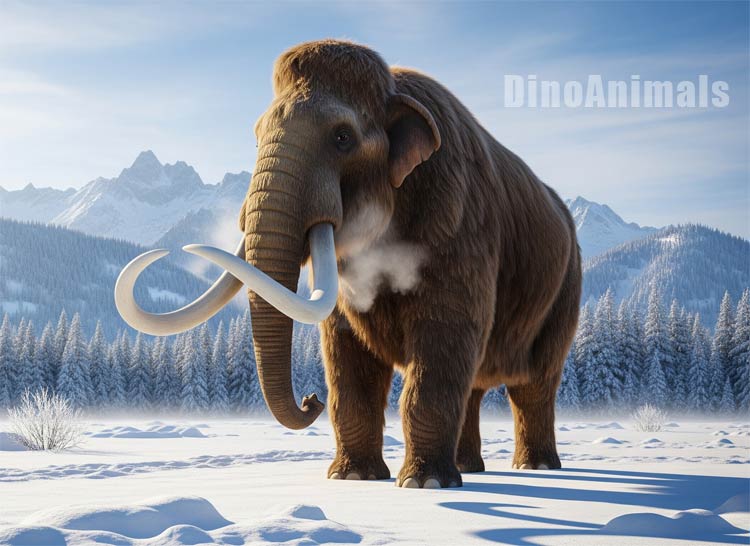
Epilogue – An Echo in the Rocks
We return to the cave as the sky over the valley takes on shades of purple and dark gold. The frost nips at our cheeks, and fatigue settles in our muscles like a heavy stone. Inside, a fire burns, and its warmth envelops us like the arms of an old friend. The hunter sits opposite us, silent for a long moment, staring into the flames. The light dances in his eyes, as if he sees memories in them that he does not want to speak.
We know that for him, every day is a struggle for survival, but also a participation in a story bigger than the individual. He doesn’t know the word “prehistory,” yet he understands that the world is changing faster than one can imagine. He also knows that memory is fragile; if a story is not told by the fire, it can fade away.
We look at the cave’s ceiling, where handprints from tens of thousands of years ago form a silent manifesto: “We were here.” Today, we are here. In the dark corners of the walls, an echo of footsteps, the rustle of leather clothes, the clink of stone against stone is hidden. If you listen to the silence, you can hear the laughter of children, the distant bark of a dog, and even the hum of the wind carrying the scent of snow and smoke.
We close our eyes and, for a moment, we are part of the same circle – the circle of people gathering around a fire for hundreds of thousands of years. When we open them, the cave is just a cave again. But somewhere deep in the rocks, in the darkness, the echo of the steps of those who walked before us still remains.
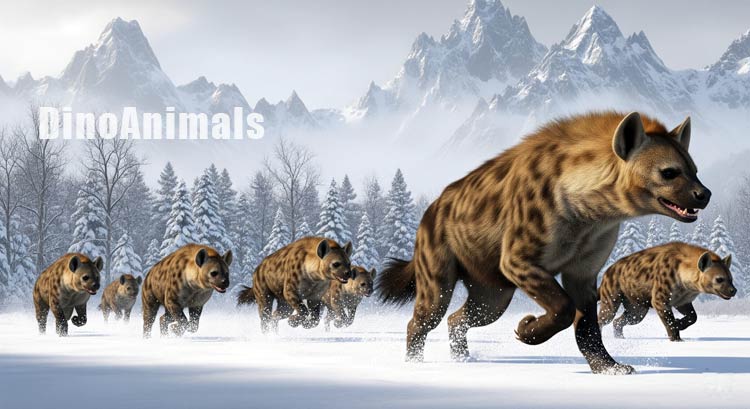
Scientific Background of the Narrative
Although our journey took the form of a story told from the perspective of people wandering through the Pleistocene epoch, its content was based on the findings of archaeologists, paleontologists, and anthropologists. What was an image in the text exists in the scientific world as layers of sediment, footprints, flint tools, and charcoal fragments that have survived for tens of thousands of years.
Ice Age Humans
During the Pleistocene epoch (2.58 million – 11,700 years ago), several species of the genus Homo inhabited the Earth. In Europe and western Asia, Neanderthals (Homo neanderthalensis) dominated, being present from approximately 400,000 to 40,000 years ago. Homo sapiens appeared on this continent around 45,000–43,000 years ago, bringing different tool-making techniques, distinct hunting strategies, and developed forms of symbolism. We find evidence of contact between these two groups in DNA research – part of the genome of modern humans outside of Africa contains fragments inherited from Neanderthals.
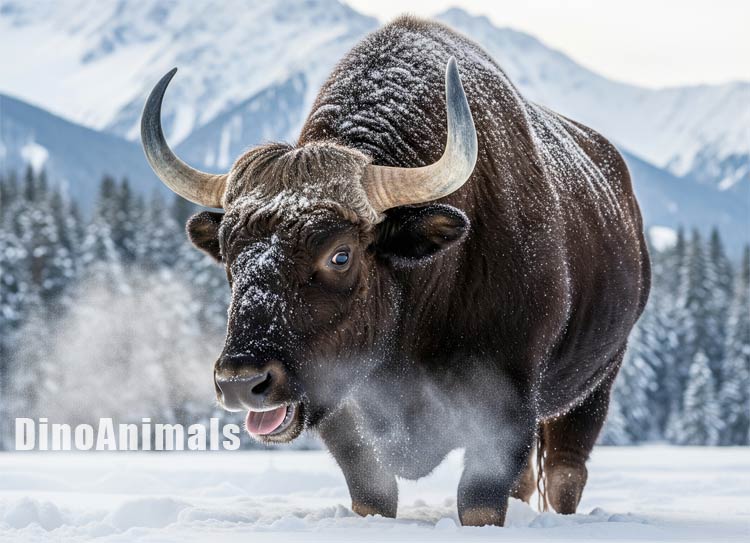
Environment and Fauna
During the last glaciation (115,000–11,700 years ago), Europe was a mosaic of tundra and steppes, with small enclaves of forests. The Pleistocene megafauna, perfectly adapted to the cold climate, lived in this harsh landscape:
- Woolly Mammoth (Mammuthus primigenius) – It reached a height of up to 3.5 m (11.5 ft) and a mass of up to 6 t (13,228 lbs), was fully furred, and had long, curved tusks.
- Aurochs (Bos primigenius) – The wild ancestor of domestic cattle, males reached 1.8 m (5.9 ft) at the shoulder.
- Reindeer (Rangifer tarandus) – An important source of food, hides, and antlers.
- Cave Lion (Panthera spelaea) – A predator with a body length of up to 2.1 m (6.9 ft) without the tail, it was one of the largest cats in history.
- Cave Hyaena (Crocuta crocuta spelaea) – A specialized scavenger and hunter, larger than today’s hyaenas.
- Wolf (Canis lupus) – Pleistocene populations were larger and had more massive skulls than modern wolves.
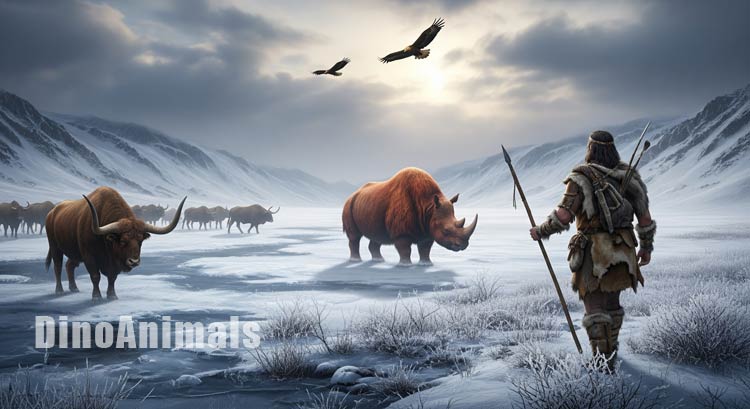
Art and Symbolism
The cave paintings that appear in our narrative are based on authentic archaeological finds:
- Chauvet (France) – Paintings from around 36,000 years ago, depicting lions, horses, and rhinoceroses in dynamic poses.
- Bruniquel (France) – Structures made of broken stalagmites, built by Neanderthals around 176,000 years ago.
- Lascaux (France) – The famous scenes with bulls and horses were created here around 17,000 years ago.
- Altamira (Spain) – Paintings of bison dated to the period between 36,000 and 14,000 years ago.
For the creators of the Stone Age, painting, rituals, and daily life were not separate spheres – they were intertwined, just as their destinies were intertwined with the fate of the animals they painted.
Faunal Changes
At the end of the Pleistocene, many megafauna species disappeared as a result of a combination of rapid climate change and increasing pressure from humans. The last woolly mammoths survived on Wrangel Island until approximately 4,000 years ago, but most populations died out between 12,000 and 10,000 years ago. With them, some large predators also vanished, which completely altered the structure of the ecosystems.

Modern Research
Today’s science uses tools that researchers from a century ago could only dream of: radiocarbon dating allows for precise age determination of finds, ancient DNA analysis reveals relationships between populations, and isotopic studies disclose details of the diet of humans and animals from tens of thousands of years ago. Thanks to this, we are gaining a better understanding of what daily life was like in the Ice Age, what connections linked humans with nature, and how our ancestors coped with dramatic climate changes.
Thus, every footprint in the frozen ground, every handprint on a cave wall, and every chipped flint flake is not just an archaeological find. It is a fragment of a larger story that began long before us and of which we are still a part.

Podcast: Walking with Cavemen
Listen to a podcast in which we walk the paths of our ancestors, presenting the life and world of Ice Age people and the megafauna that accompanied them. This is a journey following the footsteps of Homo sapiens and Neanderthals through the Ice Age tundra – a story of life, art, and the struggle for survival from thousands of years ago. Enter the world of the Ice Age and discover the daily life of cave dwellers, their hunts, art, and struggles with the harsh climate of the Pleistocene.
